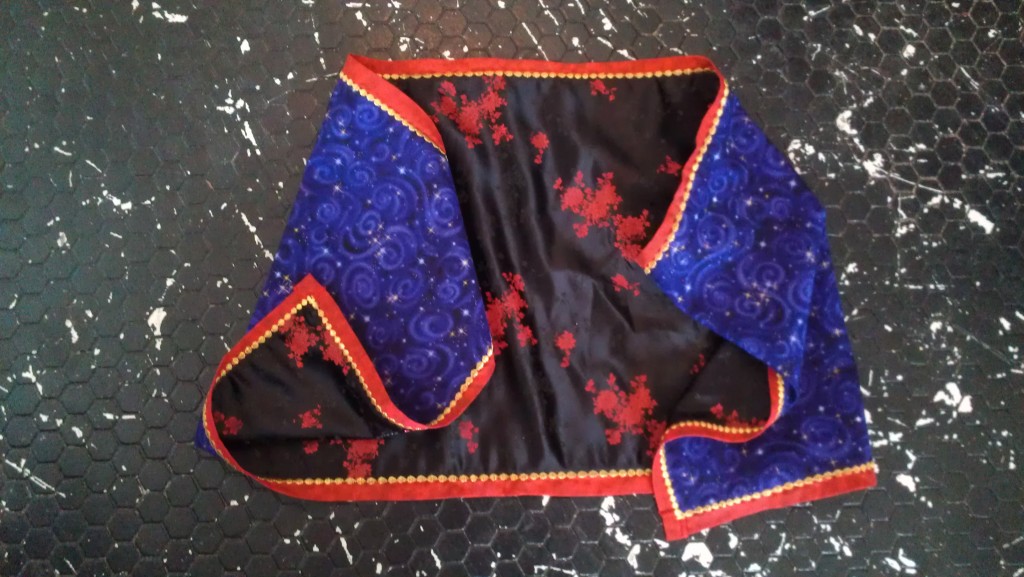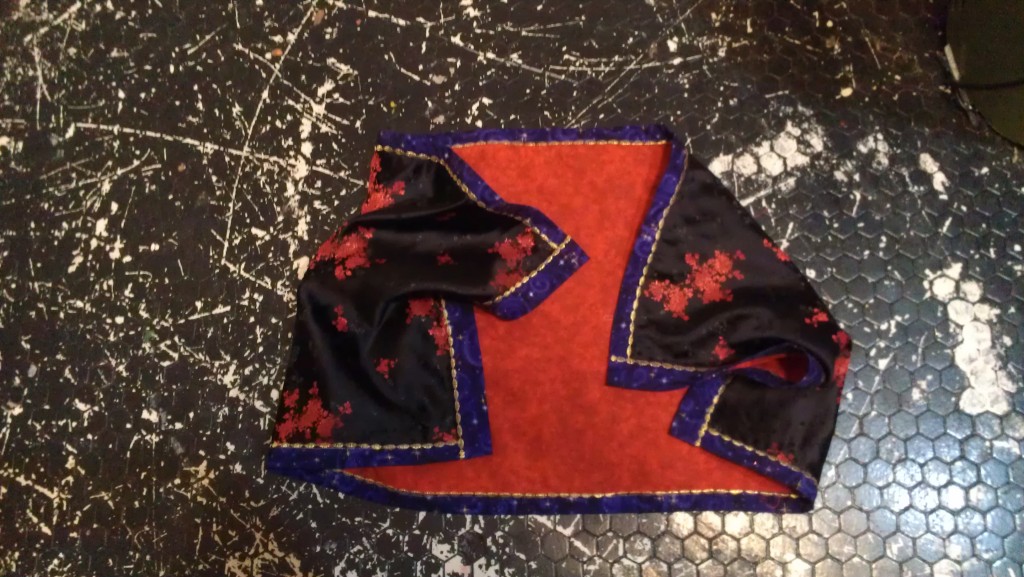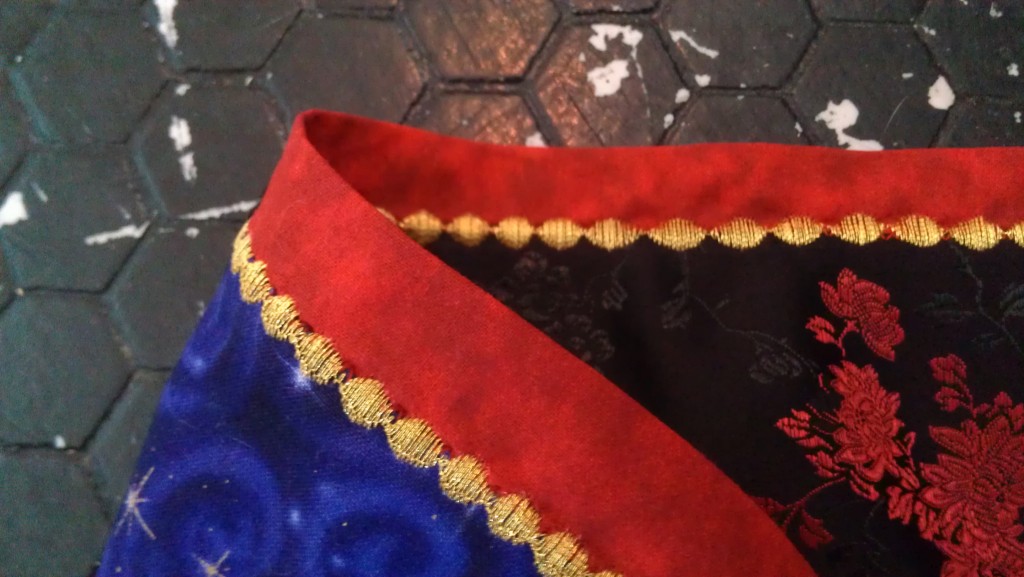There is a class in Denton taught by a–well, I was going to say “shaman,” but he’s technically not an official shaman. If anyone calls him that, he’ll correct them. But to a layman who doesn’t know much or even knows a medium amount about shamanism, you’d have to be told he’s not one. The term he uses to describe himself doesn’t quickly clarify to the casual listener how similar he is to a shaman and how many shammany things he does, so I’d say he’s effectively a shaman, or close enough to one for government work.
So there’s this class in Denton taught by a shaman, and as the students progress, all the mini-shamans need certain items for ceremonies and so forth.
Here are a couple wraps for accoutrements:
Wrapping a pipe requires red fabric against the pipe itself:
A closeup:
As I’ve already called a non-shaman a shaman, I can at least clarify one thing correctly in this post: many people will call the pipes used in Native American ceremonies “peace pipes,” but they have a lot of further uses in many different types of ceremonies. At least some traditions will have separate pipes for different occasions, such as personal pipes that are used privately or are not to be smoked by anyone besides the pipeholder and pipes that are used in a group and smoked by everyone participating.
The reason we call them peace pipes is that the only times white people saw them for many years was during the signing of peace treaties. Since no one who honors a pipe would ever cross the agreements made in a pipe ceremony, this added to the confusion Native Americans felt when every treaty made during the growth of the United States was broken. All but one, that is! Between Commanches and German settlers: http://honorthetreaty.org/history.php



